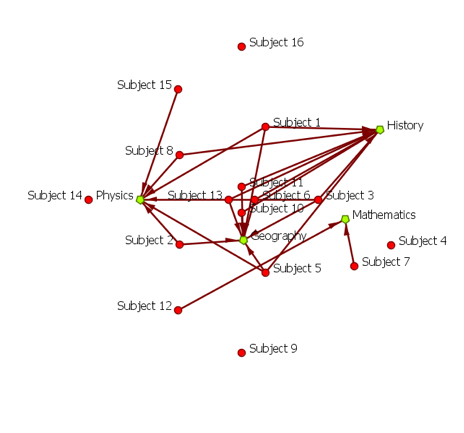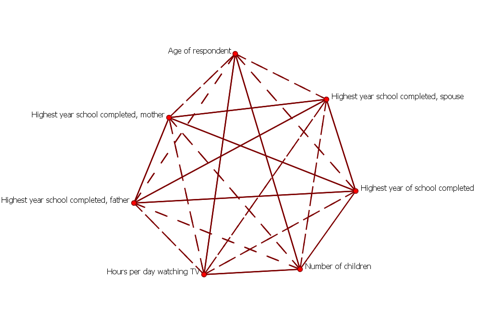My name is Simon Geletta and I’m a professor in the Department of Public Health at Des Moines University. In most program evaluation programs that rely on quantitative data for evaluation, the focus of data preparation is for statistical analysis – not for social network analysis (SNA). Some scholars have highlighted the differences in the storage structure of “traditional” evaluation data and SNA data (e.g., Wellman, 1988, Krackhardt, 1994). These distinctions point out that the former is geared towards depicting “monadic attributes” of subjects or entities while the later is focused on reflecting “dyadic” attributes between entities (Wellman, 1988).
This might make it appear that there’s a great divide between traditional evaluation data and SNA data storage structures and this may sway someone into thinking that SNA may not be as well-suited for program evaluation as the traditional statistical analyses are. This post’s goal is to maintain that distinctions drawn between the data storage approach of traditional evaluation research and that of network analysis is not that cut-and-dried – and such perceptions shouldn’t dissuade the use of SNA to extract information out of raw data.
While SNA is generally focused on enabling to understand social relationships, it can also be used to analyze entity-attribute or agent-attribute relationships. Some studies have successfully used SNA to perform such as agent-organization, agent-knowledge, agent-belief, agent-resource etc., all of which can be viewed as agent-attribute relationships. It is therefore not only possible, but often desirable, to use data stored in an entity-attribute structure for SNA.
 Figure 1: A Student-Class Network Diagram Created from a Traditional Agent-Attribute Data
Figure 1: A Student-Class Network Diagram Created from a Traditional Agent-Attribute Data
One can argue that the distinction between traditional evaluation data storage structure and the SNA data structure apply only to (limited) specific situations, these distinctions don’t always hold because both types of data are usually created as two-dimensional row/column matrix. The rows in a statistical table represent observations and the columns represent attributes. This structure is true for SNA studies that focus on agent-organization, agent-knowledge etc. When the objectives of a network analysis is to examine agent-agent relationships is when the distinction between the structures of traditional evaluation data and network analysis data become more obvious.
A final reason why the distinction between traditional evaluation data and network analysis data may not be that relevant is that the former can be transformed into an entity-by-entity matrix by using statistical summary techniques such as cross-tabulation for categorical variables or correlation for numeric variables.

Figure 2: Agent-Agent Relationship Network Created from a Traditional Survey Data. Data Source: 2010 General Social Survey Sample Data
Rad Resources: These resources were used for reference in the post.
- Borgatti, S. P., & Everett, M. G. (1997). Network analysis of 2-mode data. Social networks, 19(3), 243-269.
- Krackhardt, D., Blythe, J., & McGrath, C. (1994). KrackPlot 3.0: An improved network drawing program. Connections, 17(2), 53-55.
- Wellman, B., & Berkowitz, S. D. (Eds.). (1988). Social structures: A network approach (Vol. 2). CUP Archive.
The American Evaluation Association is celebrating Social Network Analysis TIG Week with our colleagues in the Social Network Analysis Topical Interest Group. The contributions all this week to aea365 come from our SNA TIG members. Do you have questions, concerns, kudos, or content to extend this aea365 contribution? Please add them in the comments section for this post on the aea365 webpage so that we may enrich our community of practice. Would you like to submit an aea365 Tip? Please send a note of interest to aea365@eval.org. aea365 is sponsored by the American Evaluation Association and provides a Tip-a-Day by and for evaluators.
